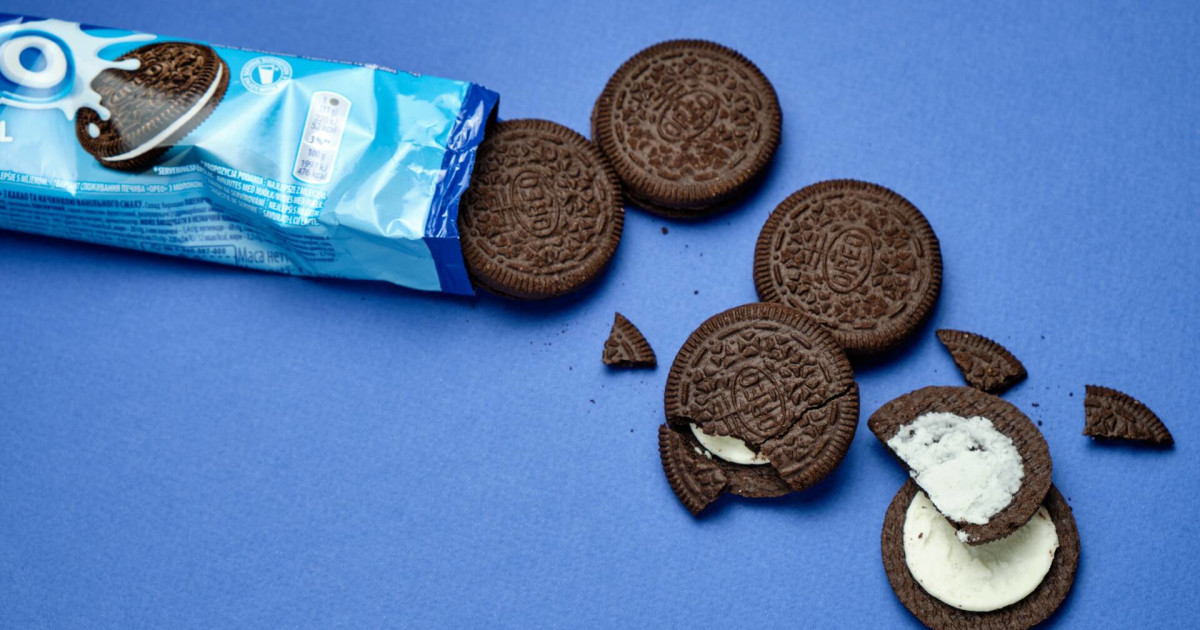Copyright The Street

“Life is like a box of chocolates…you never know what you’re gonna get,” said Forrest Gump. The message is simple: Life is full of surprises. Today, the line feels more literal than ever. While technology has advanced significantly, our ability to judge right from wrong has deteriorated just as much. Modern food is a prime example of this decline. A significant portion of what we see on store shelves likely shouldn’t even be called food. These are ultra-processed foods, loaded with sugar, salt, fat, artificial colors, and preservatives. According to Harvard Health Publishing, these foods often contain extracts like starches and hydrogenated fats, along with additives such as artificial flavors and stabilizers. Manufacturers go to great lengths to create cheap, tasty, and addictive foods that can earn them big money without any thought of consequences to our health and environment. It’s nothing new. It’s just capitalism. In recent years, the food industry has moved into lab-grown products, edible items developed entirely in laboratories. Lab-grown chocolate butter, welcome to the world Celleste Bio, a food tech startup backed by American multinational confectionery giant Mondelēz, claims to be the first to produce cell-cultured cocoa butter, reported Food Dive. The company developed proprietary cocoa technology that eliminates dependence on fragile rainforests. It says it can produce “100% natural cocoa ingredients at scale anywhere in the world,” though it’s unclear how “natural” is defined. The FDA defined the term “natural” as free from artificial or synthetic additives, but this doesn’t address whether something is lab-grown or man-made. Celleste Bio Michal Berresi Golomb said: “Our ability to produce real cocoa butter via cell culture proves that science can be used to grow and produce ingredients that mirror nature with integrity and transparency. This is a major R&D achievement for Celleste led by Hanne Volpin, CTO of Celleste, and her R&D team, and also validation for the entire cocoa industry that there is a solution to supplement supply chain shortages caused by the volatility and unpredictability of traditional farming.” Howard Yano Shapiro, a retired chief agriculture officer at Mars, added that the technology is not meant to replace traditional farming but to serve as an “insurance policy” against future disruptions. Cocoa prices reached historic highs in 2024 Celleste’s breakthrough comes amid soaring cocoa prices, driven by bad weather, aging trees, and crop diseases in West Africa, according to CNBC. In December 2024, New York cocoa futures hit a record $12,565 per metric tonne, according to Al Jazeera. By April, prices dropped to around $8,350, still well above historical levels. Analysts, including Carsten Fritsch from Commerzbank, warn that dry conditions may again impact crops this year. In October 2025, Ghana, the world’s second-largest cocoa producer, raised its farmgate price to cocoa farmers by over 12%, the second increase this year, reports CNBC Africa. Hershey, Nestlé raising prices, finding cocoa alternatives High cocoa costs have forced brands like Hershey and Nestlé to raise prices or seek alternatives. In July, CBS News reported that Hershey will raise candy prices by a “low double-digit” percentage. The company behind popular brands such as Hershey Kisses, KitKat, Reese’s, and York made it clear that the price increase has nothing to do with tariffs or trade policies. The increase typically takes effect in 90 days. In May, Bloomberg reported that Nestlé USA not only raised prices, but also developed a method to use 30% more of the cocoa fruit, reducing waste. Meanwhile, Ardent Mills, a joint venture of Cargill, Conagra, and CHS, created a wheat-based substitute that can replace 25% of cocoa powder in baked goods, according to Food Dive. The situation is no better across the pond, where McVitie’s Penguin and Club bars now contain so little cocoa that they’re labeled “chocolate flavour” rather than chocolate, reports BBC. Cocoa content requirements vary: In the U.S., milk chocolate must have at least 10% cocoa solids; in the UK, it’s 25%, according to Hotel Chocolat. Controversy around lab-grown foods Lab-grown meat, also called cultured or cell-cultivated, involves taking animal cells and growing them in a nutrient-rich environment. Despite years of research, scaling remains difficult. Dutch scientist Mark Post unveiled the first cultivated meat burger on live television in 2013, and the U.S. approved the sale of lab-grown meat for the first time in June 2023. Lab-grown salmon was first approved by the FDA in June 2025. While lab-grown meat might sound like a reasonable strategy to reduce land and water use, cut greenhouse emissions, or eliminate animal killing, many experts have started to raise eyebrows and question the actual benefits. Concerns with lab-cultured meat include: Potential health risks Environmental impact Nutritional quality Socioeconomic consequences Sources: Food and Agriculture Organization of the United Nations, Wageningen University So far, seven U.S. states — Texas, Indiana, Mississippi, Montana, Alabama, Florida, and Nebraska — have banned the sale or production of cultivated meat. Many other states are considering doing the same. Upside and Wildtype, two FDA-approved companies that sell lab-grown meat, are suing to overturn Texas’s ban. The Israel-headquartered startup is not the only company in the world working on lab-grown chocolate. Other startups working on cell-cultured cocoa butter include: California Cultured (USA) Food Brewer (Switzerland) Kokomodo (Israel) Celleste Bio, headquartered in Israel, has raised about $15 million, with backing from Mondelēz. The company is now building a pilot facility to scale production. Lab-grown chocolate challenges Like any new tech, lab-grown chocolate will need time for its benefits and drawbacks to become clear. Supporters say it could reduce deforestation, child labor, and heavy metals in cocoa. Critics point to challenges in: Scaling Regulatory hurdles High costs of lab-grown production The impact on farmers The “ick” factor Source: Gourmet Pro Wanting to resolve a problem is a good intention. But as the saying goes, the road to hell is paved with good intentions. How we approach problems matters. The question to be pondered: Would it be better if we took the amount of resources scientists applied to develop this “Star Trek” technology and instead used it to pay farmers what they deserve and help plants flourish?



